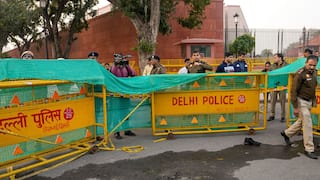Indian Woman With 'Bipolar Disorder' Goes Missing In New York, Police Seek Public's Help To Find Her
According to the New York police department, the 112 Precinct Detective Squad is "endeavouring to locate" Khoja and has released her photos.

A 25-year-old Indian woman has gone missing in New York City, and authorities are looking for information from the public to help find her. Ferin Khoja was last seen leaving her Queens house at 11 p.m. on March 1, news agency PTI reported. The New York City Police Department reported that she was last seen wearing an olive green jacket, a green sweater, and blue trousers.
According to the information, Khoja "suffers from bipolar disorder".
According to the police department, the 112 Precinct Detective Squad is "endeavouring to locate" Khoja and has released her photos.
The Consulate General of India in New York has been alerted of the situation and is working to gather information regarding Khoja and her location.
Earlier in January this year, an Indian student who had gone missing in the United States was declared deceased by university authorities, a day after his mother took to social media to solicit information about his whereabouts. Neel Acharya, a computer science and data science student at Purdue University in Indiana State, was missing since January 28, according to his mother Goury Acharya's post on X (previously Twitter).
What Is Bipolar Disorder?
A disorder characterised by periods of mood swings that range from depressive lows to manic highs.
The specific origin of bipolar disease is unknown, but genetics, environment, and altered brain structure and chemistry may all play a part.
Symptoms of a manic episode may include a rise in energy, decreased desire for sleep, and a lack of touch with reality. Symptoms of a depressive episode may include a lack of energy, motivation, and interest in daily tasks. Mood episodes can linger for days or months and may be connected with suicidal thoughts.
ALSO READ | Why Anaemia Impacts A Large Number Of Indian Women, And What Must Be Done To Prevent It
Treatment is often lifelong and includes a combination of medication and psychotherapy.
Trending News
Top Headlines











































